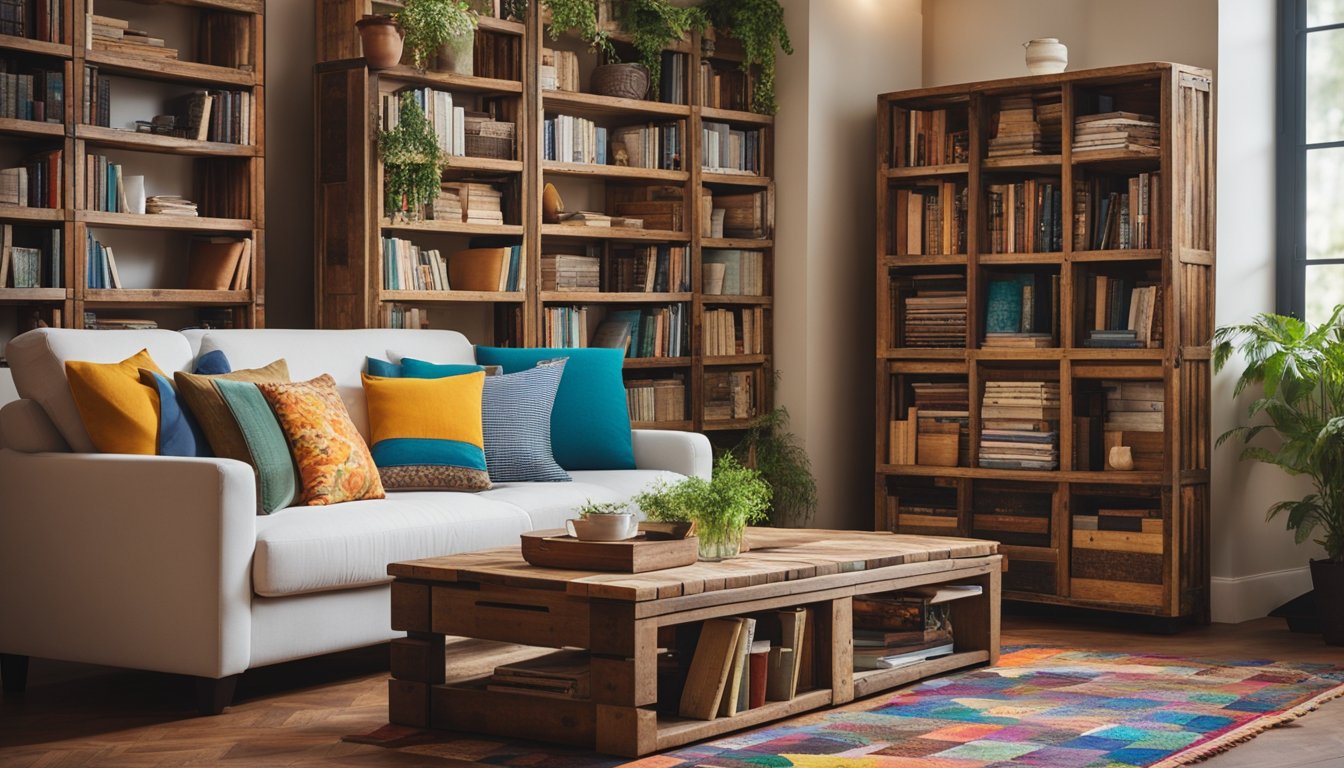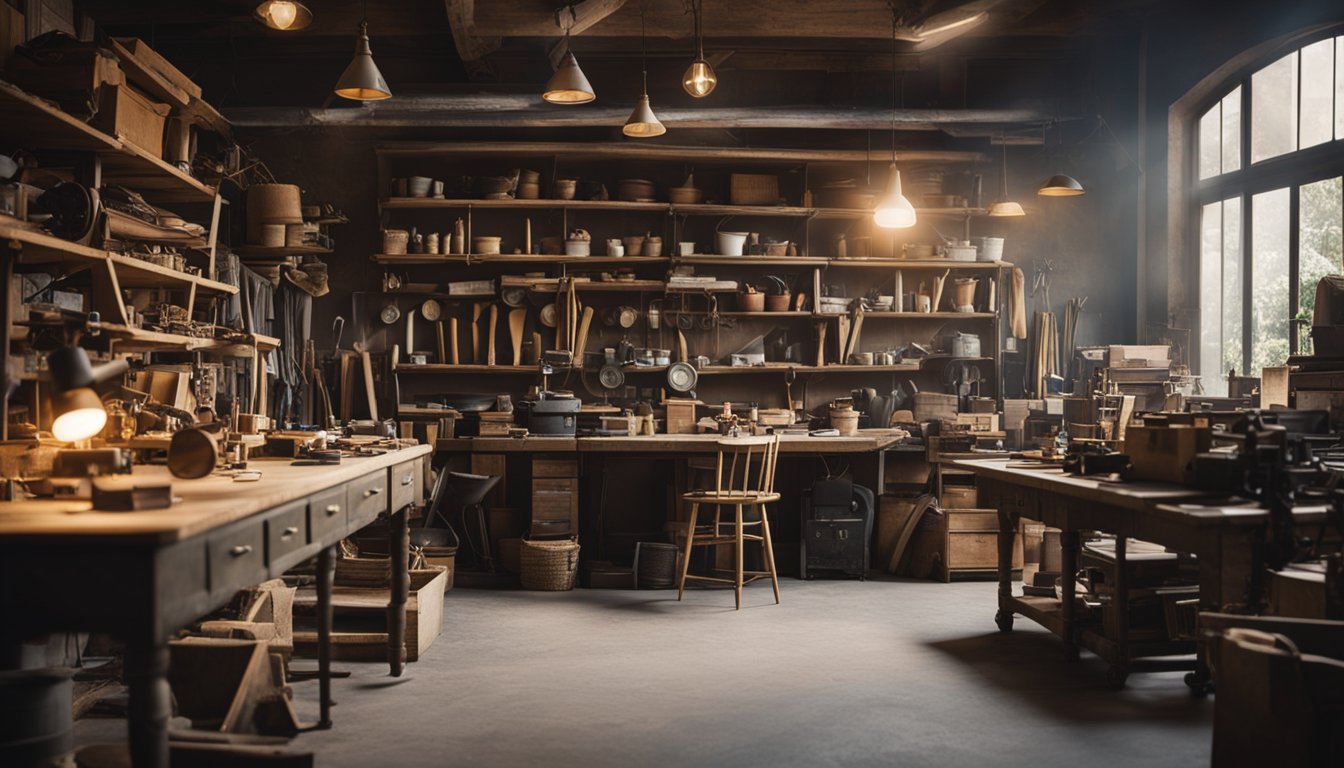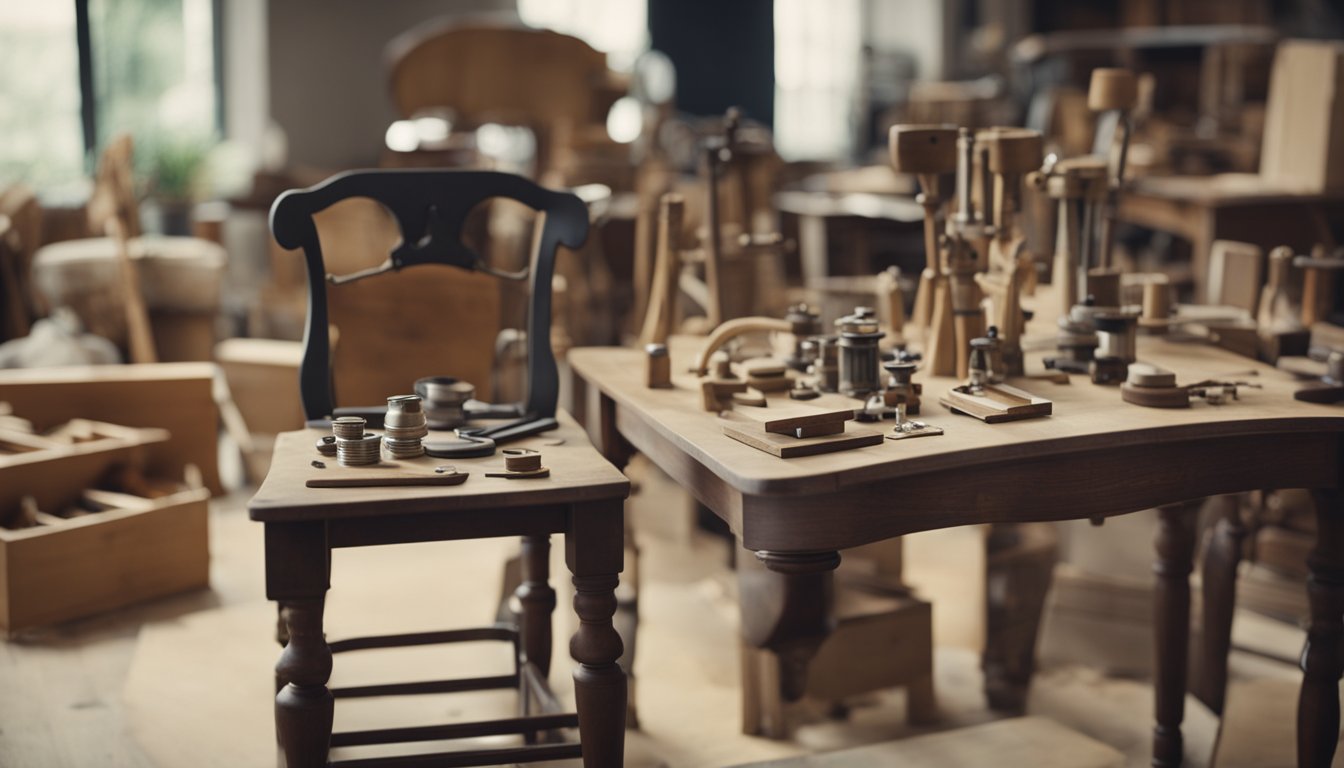Late updated: 28 Nov 2024 15:11
Written by: Daniel Harper
Innovative Ways To Repurpose Old Furniture: Transform Your Space Efficiently
Breathing new life into old furniture not only revitalises our home aesthetics but also promotes a sustainable lifestyle, reducing waste and minimising our environmental footprint. Repurposing offers innovative ways to transform discarded pieces into unique and stylish home decor, mixing creativity with resourcefulness. Whether it's turning a retro TV cabinet into a quirky pet bed or crafting a new side table from recycled crates, the possibilities are endless and engaging.

As we explore various transformation techniques, we discover how selecting the right furniture can lead to stunning results. Upcycling isn't just a trend; it's an opportunity to express personal style while contributing positively to the environment. By embracing these creative practices, we not only give old items a fresh purpose but also reflect a commitment to sustainability in our everyday choices.
Key Takeaways
- Repurposing furniture merges creativity with sustainability.
- Selecting the right piece is key to a successful transformation.
- Upcycling extends the life of furniture while reducing waste.
Discovering Potential: Finding and Selecting Furniture
In our journey to repurpose old furniture, identifying treasures that can transform a space is essential. We will uncover the best places to find these gems, how to ensure they're worth the investment, and the importance of having a clear vision for the project.
Sourcing Second-Hand Treasures
Finding unique furniture pieces begins with knowing where to look. Thrift stores are treasure troves of potential, often housing forgotten gems. Visiting these regularly can yield remarkable finds. Garage sales and flea markets are great for unearthing items with history and charm. The appeal of garages sales is immediate bargains, while flea markets offer a variety of styles.
Online platforms, such as Facebook Marketplace, provide a convenient way to explore options. Searching these platforms can expand our reach beyond local offerings, including rare items that might not appear in traditional settings. We must remain patient and persistent, as the best finds often require time and effort.
Assessing Quality and Durability
Once we've sourced potential pieces, examining their quality is paramount. We should look for solid construction, especially in old wooden furniture, which is often more durable. Signs of wear are typical, but they shouldn't compromise structural integrity. Key areas to check include joints, which should be tight and secure.
It's important to evaluate materials. While solid wood is desirable for its longevity and versatility, veneers or laminate may be just as effective if intact. Also, assessing surface damage helps us determine the level of restoration required. We should weigh the effort against the potential transformation.
Planning Your Project: Vision and Tools
Before beginning our project, a clear vision is necessary. Identifying the purpose of the piece within our space will guide our design choices. Are we seeking to retain its vintage charm or infuse it with a modern twist? Answering these questions brings clarity to the creative process.
Having the right tools is equally important. Basic tools like sanders, paintbrushes, and screwdrivers are indispensable. For more intricate work, power tools or specialised equipment might be needed. Creating a project plan, with a list of required tools and materials, ensures a smoother execution and helps in achieving the desired outcome.
Transformation Techniques and Ideas

Repurposing old furniture offers numerous exciting possibilities. From renewing surfaces with paint and fabric to breathing new life into worn-out pieces with creative reuse, the opportunities are endless. Let's explore specific techniques that can transform discarded items into stylish and functional home decor.
Furniture Makeover: Painting and Reupholstering
Painting furniture is a versatile way to revive outdated pieces. Using chalk paint or milk paint gives furniture a unique finish without much prep work. Try colour blocking or stencilling for added flair. For a more luxurious look, consider metallic accents.
Reupholstering is another effective transformation method. Tired chairs or benches gain a fresh appearance with new fabric. Choose durable materials with appealing textures or vibrant patterns to enhance interior design. Reupholstering not only revives furniture but also allows us to personalise pieces to match our style.
Creative Reuse: From Old to Gold
Creative reuse can turn old items into functional art. Take an abandoned door and convert it into a vintage headboard or a striking dining table. Bookshelves might become an attractive garden planter. Wooden crates can morph into storage solutions or shelving units.
Upcycling broken chairs into wall art or a unique coat rack showcases imaginative design. The key lies in reimagining functions, allowing us to create customised furniture that tells its own story. This approach not only saves money but also reduces waste.
DIY Projects: Building Your Skills
DIY furniture projects are rewarding and skill-building endeavours. Begin with small tasks like turning a wooden ladder into a rustic bookshelf. As confidence grows, attempt larger projects like crafting a headboard bench or repurpose an old dresser into a chic bathroom vanity.
Furniture flipping can also be a profitable adventure. We learn to spot potential in unloved pieces and transform them for resale or personal use. Whether it’s sanding, staining, or adding new fixtures, each project enhances our craftsmanship and diversifies our home’s decor.
By engaging with these techniques, we not only reinvent spaces but gain a deeper connection to our surroundings through creativity and sustainability.
Frequently Asked Questions

Exploring the nuanced process of upcycling furniture, we delve into how to initiate such projects at home and explore creative ideas for reviving outdated items. We discuss essential tools, methods to retain a piece's original appeal, and considerations for those contemplating a business in furniture repurposing.
How can one begin upcycling furniture at home?
Starting with upcycling at home involves identifying pieces that possess potential for transformation. We suggest beginning with small projects, such as repainting or reupholstering a chair or table. Utilising online tutorials can also offer guidance and inspiration for these initial projects.
What are some creative ideas for rejuvenating outdated furniture?
Ideas for rejuvenating furniture include converting an old dresser into a chic kitchen island or transforming vintage suitcases into trendy side tables. With a little creativity and effort, ordinary pieces can become standout items that breathe new life into a space.
Could you suggest some ways to reuse furniture in a modern home setting?
In a modern setting, reusing furniture might involve integrating architectural salvage as wall decor or repurposing pallets into rustic coffee tables. Utilising furniture with a focus on contemporary aesthetics can help blend these pieces seamlessly into the overall decor.
What are the fundamental tools and materials required for repurposing old furniture?
Basic tools typically include a hammer, screwdriver set, and sandpaper, while materials like paint, varnish, and fabric may be needed depending on the project at hand. Using these tools and materials effectively allows for versatile and imaginative transformations.
How does one transform a piece of furniture while maintaining its original charm?
To preserve a piece's original charm, we recommend accentuating its unique features, like intricate carvings or distinct textures. This can often be achieved through careful refinishing techniques, such as sanding and repainting, while ensuring that the inherent character of the piece is not lost.
What should be considered before starting a furniture repurposing business?
For those interested in a business, understanding market demand, securing a reliable source of old furniture, and developing unique design concepts are key considerations. Additionally, acquiring knowledge of business regulations and customer preferences plays an essential role in establishing a successful venture.
